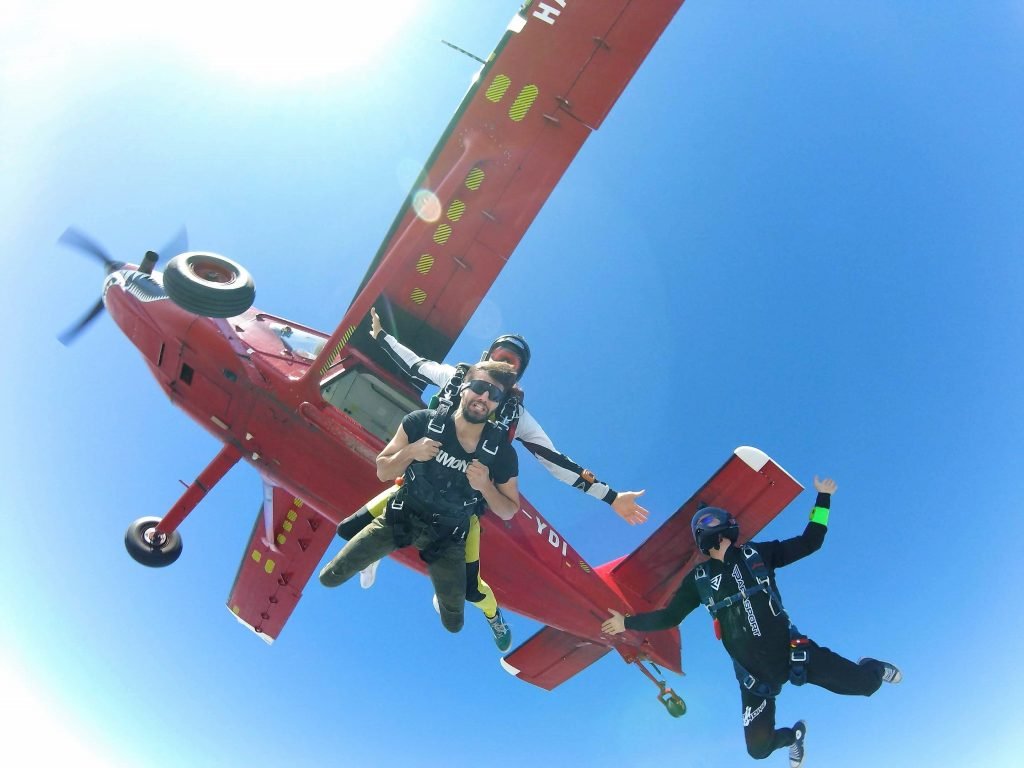There’s an old joke, ‘you don’t need a parachute to go skydiving, you only need a parachute to go skydiving twice.’ Despite those words of jest, there are those, who by meticulous planning and bravado or freakish luck, have survived skydiving without a parachute.
While there’s no such thing as a totally risk-free skydive, skydiving is a relatively safe sport (when done correctly and under the supervision of professionals). But doing so without the aid of a parachute or wingsuit is a different story altogether. Professional skydiving with a parachute results in a fatality less than once in every 100,000 jumps. However, there are no calculations on how safe skydiving without a parachute is – so few have been crazy brave enough to do so.
It takes an insane amount of skill, planning, and luck to complete a skydive without a parachute. Still, many thrill-seekers ponder over what it’d be like to partake in the most extreme of extreme sports.
What is skydiving without a parachute called?
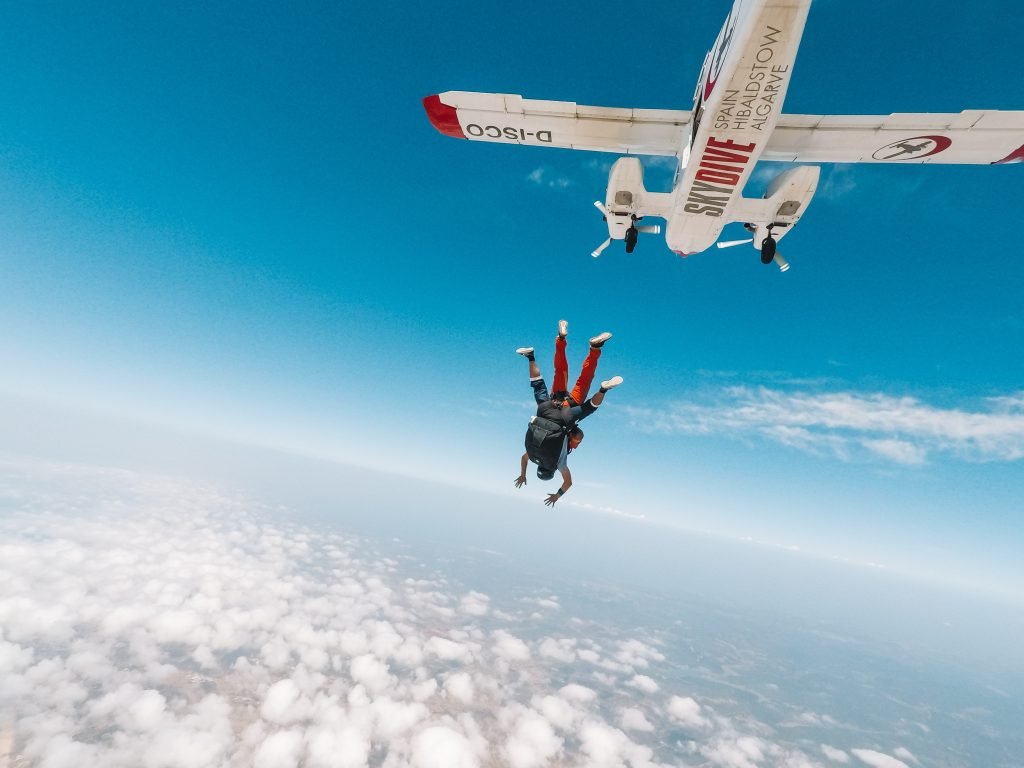
There’s no widely agreed term for skydiving (and landing) without a parachute. The term ‘freefall’ is the act of falling through the sky without anything to slow or aid your descent. You are literally falling free through the air, at the mercy of gravity and the elements.
When a skydiver jumps from a plane they’re regarded as being in freefall until the moment they use their parachute. This is typically at around 2,000 to 5,500 feet from the ground. So with a typical skydive starting at 10,000 to 15,000 feet, around ⅔ of the skydive will be a freefall without the use of a parachute.
There is a form of extreme skydiving referred to as banzai skydiving. It’s somewhat mythical on the skydiving scene with few recorded cases or verified banzai jumps. To complete a banzai skydive the skydiver needs to throw their parachute out of the plane and diver after it. They must then catch up to their parachute and strap it on. And this all needs to be done in time for a safe landing in the targetted zone. Purists will only recognize a banzai jump when it’s done by a solo skydiver with no third-party support.
There’s no wonder banzai skydiving is regarded by many as the world’s most dangerous sport!
How fast do you fall when skydiving without a parachute?
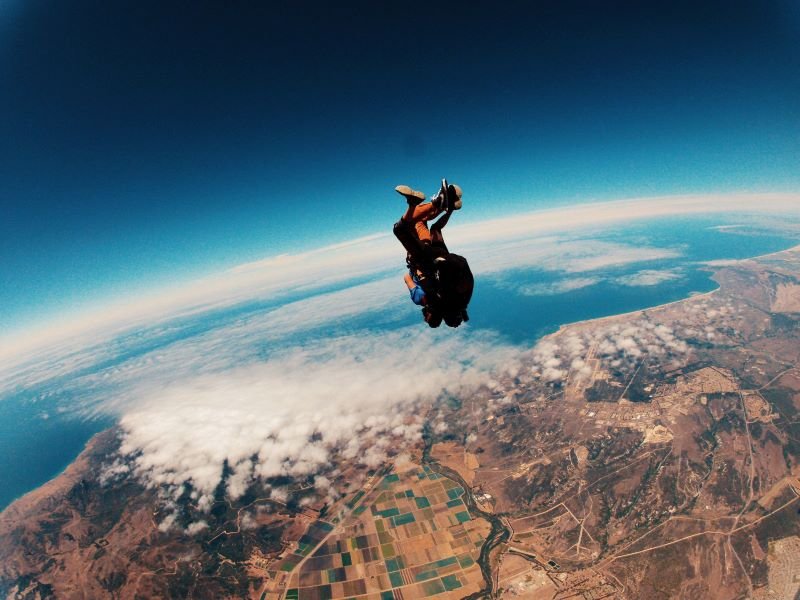
Back on October 14th of 2012, the Austrian skydiver Felix Baumgartner set three unimaginable world records. You probably even saw it, as it streamed live on YouTube by 9.5 million people during the Redbull Stratos Event. As well as recording the highest manned balloon flight and the highest altitude jump, he also fell so fast he became the first human to break the sound barrier without the use of an engine! His top speed was logged at 843.6 mph (the speed of sound is 769 mph).
OK, so your not going to fall anywhere near that fast on a regular skydive. When in freefall within the earth’s atmosphere a human will immediately begin to accelerate at around 9.8 m/s2. You’ll continue to accelerate until you reach ‘terminal velocity,’ which is around 53 m/s2 for someone in the spread freefall position, which equates to about 190 km/h or 118 mph. You’d then hold this speed until you changed position to create less surface area, or until you used the aid of a parachute or wingsuit.
Your weight can make a small difference and two people on a tandem dive will gain a few extra mph. But it’s your body position or spread mass which has the greater factor on your speed. If a skydiver wants to increase their speed they can reduce the spread of their body. Decreasing their surface area will then increase their terminal velocity and top speed. Diving headfirst a skydiver can reach speeds up to 180 mph.
What does it feel like to freefall?
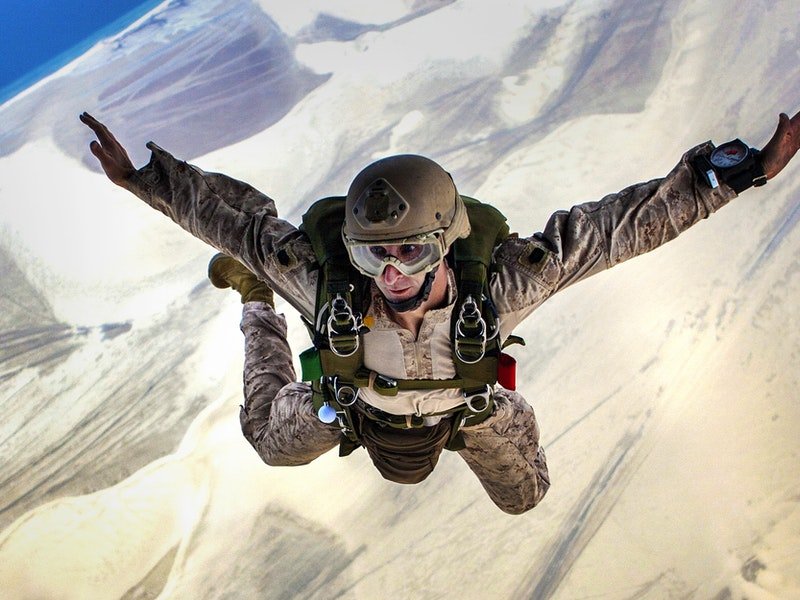
Given that your freefall acceleration is around 9.8 m/s and most people reach terminal velocity by 53 m/s2 you’ll only feel the full effects of free-falling for about 5.4 seconds. While those first few seconds can be an adrenaline rush, once you reach terminal velocity you can expect to find a calming sensation. As you stop accelerating and you feel cushioned by the air, able to take in the amazing views.
There are some myths that when freefalling the noise is deafening, but this is totally untrue. Yes, it can be noisy, but it’s more like driving down the highway with the window open ⅓. There’s going to be some loud noise but it’s nothing too unfamiliar or alarming. With all your other senses being stimulated you probably won’t be bothered by the noise at all.
The most overwhelming sensation will be the view. You’ll get a spectacular and breathtaking view for miles around, giving you a new perspective of what’s surrounding you. You’ll also get this clean, fresh air smell, and a chilled rush of air caressing and passing around your body. It can be a wholly pleasant and emotional experience.
What is the highest skydive without a parachute?
While Felix Baumgartner recorded the highest every skydive and freefall, even he ended his fall with a parachute. The highest recorded skydive without a parachute is currently by American skydiver Luke Aikins. Luke completed a jump and freefall of 25,000 feet without the use of any parachute or wingsuit (a typical skydive is usually between 7,000 to 18,000 feet).
As part of a televised event called ‘Heaven Sent,’ on July 30th, 2016, Luke made his jump over the Simi Valley in California. He reached speeds of 120 mph with the skydive taking just 2 minutes.
Luke used a sophisticated GPS system that matched his position with the position of the 30x30m net awaiting his landing. A light on each corner of the polyethylene net indicated his positioning. The lights showed red when he was out of position and white when he was on target. In the final seconds before reaching the target, Luke flipped over on his back and landed safely in the netting. Phew!
Can you survive skydiving without a parachute?

As Luke proved, it is possible to go skydiving without a parachute and live to tell the tale. But there have been extremely rare cases where a skydiver’s equipment has failed or someone has fallen from a plane, and they have landed without a parachute… and survived!
There’s the incredible case of Victoria Cilliers who in 2015 went skydiving from 4,000 feet. Mid-fall Victoria discovered that her parachute and reserve had both malfunctioned. She plummeted to the earth without anything to slow her fall. It incredibly turned out that her husband, Emile, had purposely tampered with her parachute in a bid to murder her. Even more incredibly, Victoria survived the fall!
But this isn’t the highest anyone has survived an unplanned freefall without a parachute. In 1972, a Serbian flight attendant called Vesna Vulović fell over 33,330 feet. Vesna was sent into an unplanned freefall when her DC-9 passenger plane exploded during a routine flight. Miraculously, she lived to tell the tale.
How do you survive skydiving without a parachute?
In planned skydiving without a parachute, as with Luke Aitkin’s jump, the skydiver will have a large cushioned or netted area to land in. They’ll also have lots of aids, precautions, and safety procedures in place to limit the risks and dangers involved. But what if a skydiver finds themselves unexpectedly freefalling with no parachute or equipment to help slow or stop their plummet? How could you increase your chances of surviving such a freefall without a parachute?
Victoria Cilliers was fortunate to fall into a freshly plowed field. In 2006, skydiver Michael Holmes fell 10,500 feet with his parachute and reserve both failing. He landed on a large blackberry bush. In 2009, skydiver James Boole fell 6,000 feet, only managing to open his parachute at the last minute. His fall was into deep snow.
These survivors all have something in common – they landed on soft surfaces which cushioned their impact. Spreading your body and surface area as wide as you can, will not decrease your speed significantly. To survive, your best tactic is to focus on the landing area and try to find the softest target.
How often do parachutes fail?
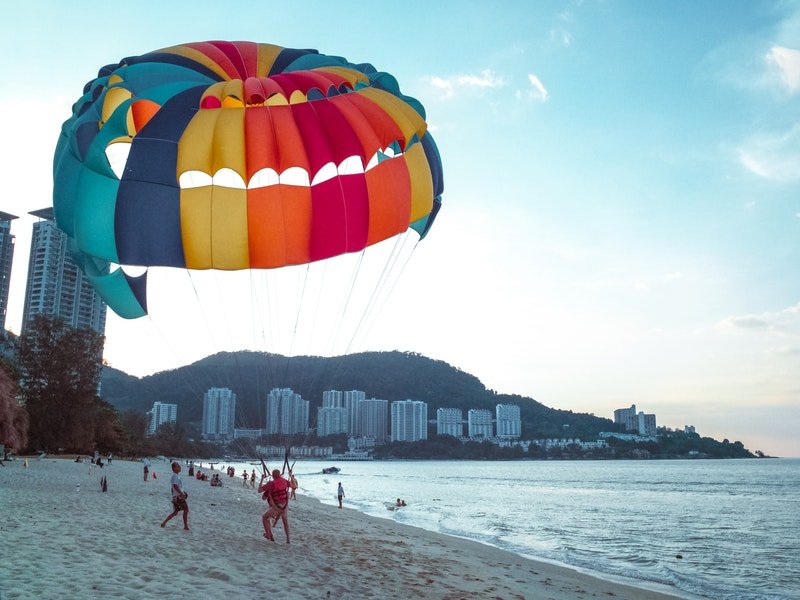
Despite the horrors and misfortune of the above, it’s extremely rare for a parachute to fail. Parachutes are packed by licensed professionals and routinely checked. 1 in 1,000 parachutes can experience some form of malfunction, but even on these rare occasions, the skydiver can activate the backup parachute. If for any reason they are unable to do so, the reserve will automatically deploy.
The truth is that most skydiving deaths happen with a fully functional parachute and are down to human error. Usually when the skydiver attempts to do something risky or stupid. In fact, a significant number of skydiver deaths happen during shows and performances. During performances, there’s an increased amount of risk and skydivers attempt to do something more dangerous and spectacular.

